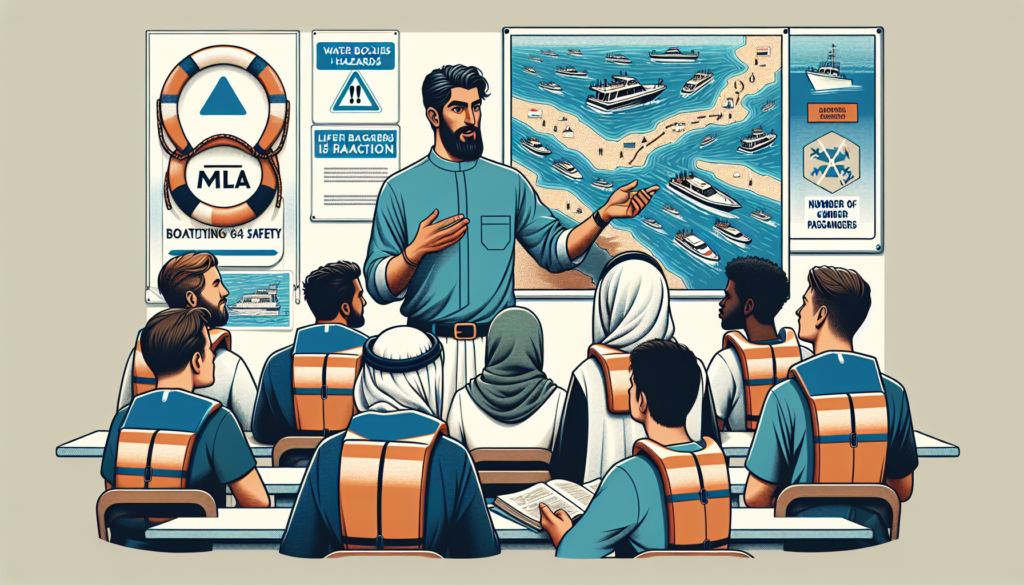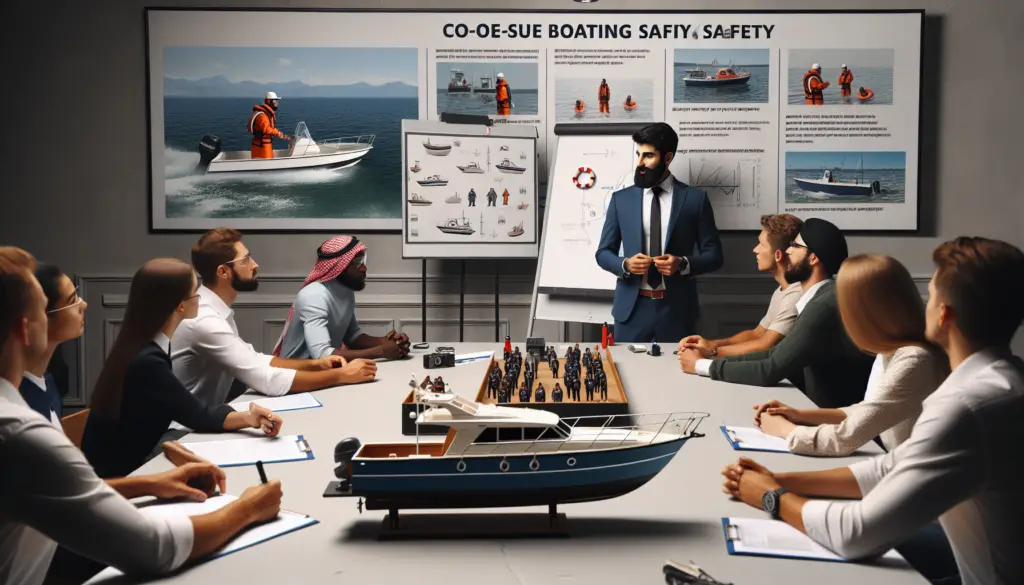As you sip your morning coffee, imagine feeling the refreshing sea breeze on your face, and the thrilling sense of adventure that comes with guiding a vessel across vast, open waters. This is the essence of boating — a seamless blend of freedom, exploration, and tranquility. However, to fully harness this experience, there’s a crucial factor to consider: safety. “Boating Safety Courses: What You Need to Know” sails you through the essential elements of these courses, equipping you with the knowledge and skills necessary to ensure that your maritime ventures are both exciting and secure.

Understanding the Importance of Boating Safety Courses
Imagine the cool breeze on your face, the sun’s reflection on the water’s surface, and the thrill of navigating your way across the blue expanse. Boating certainly seems to offer endless adventure. However, all this fun does not negate the need for due diligence on safety. This is where boating safety courses come in.
Significance of Safety Courses
Boating safety courses are not just valuable, but essential for everyone keen on exploring the waterways. They offer knowledge and skills on how to handle different types of boats, operation of safety equipment, understanding of navigation laws, boating etiquette, and importantly, emergency procedures. These courses are designed to equip you with all the necessary skills to make your boating experience safer and enjoyable.
Statistics on Boating Accidents and Safety Training Consequences
Boating accidents are not as rare as you think. Statistics reveal grim tales of fatalities, injuries, and property damage due to boating mishaps. Many of these unfortunate incidents are rooted in lack of training, ignorance of safety rules, or complacency. However, the good news is that having safety training significantly reduces the likelihood and severity of accidents.
Requirements for Taking a Boating Safety Course
Eligibility and requirements for boating safety courses may vary across states and companies offering the courses. Yet, there are some common guidelines that you should be aware of.
Age and Skill Level Guidelines
Your age and skill level form the primary determinants of the type of course you need. While there might be certain courses available for youngsters, a majority require you to be at least 16 years of age. Having basic literacy skills is generally required, given that these courses often involve reading material and written examinations.
Geographical and Jurisdictional Regulations
Each state or country has its own set of rules and regulations pertaining to boating safety courses. Before getting involved, it is vital to familiarize yourself with these. A regulation in one region may not necessarily apply in another, and ignorance can lead to penalties or permission denials.
Difference Between Online and In-person Courses
Navigating waves and waterways is an exciting hands-on experience. However, learning how to do it may not always require you to be physically present. Let’s delve into the essential differences between online and in-person courses.
Pros and Cons of Online Courses
Online boating safety courses provide the advantage of pace flexibility and convenience – you can learn at your own speed, anytime, anywhere. However, their virtual nature limits opportunities for practical experience and direct instructor-feedback, which are crucial for learning boating procedures.
Advantages and Disadvantages of In-person Courses
In-person courses, on the other hand, offer hands-on experiences and immediate clarification of doubts. Having an instructor present physically can make learning more effective. Nevertheless, these courses might require you to adhere to a strict schedule, which could conflict with your other responsibilities.

Types of Boating Safety Courses
Boating safety courses come in various shapes and sizes depending on your specific need. Being aware of these types will help you choose the right course.
Basic Boating Safety
These beginner-level courses acquaint you with boating basics and universal safety guidelines. They allow you to understand and handle boats and their related tools effectively.
Advanced Nautical Navigation
As the name suggests, these advanced courses focus on nautical navigation, addressing aspects like navigation rules, use of navigational tools, understanding of charts and sailing directions, etc.
Emergency Protocol and Response
In the face of emergency, how well you handle the situation could mean a lot. These courses prepare you for emergencies – like man overboard, hull breach, or engine failure – teaching you practical survival tactics and protocols.
What to Expect in a Boating Safety Course
Intrigued by the idea of enrolling? Let’s talk about what you can expect during a boating safety course.
Course Structure and Contents
Each boating course consists of several lessons covering boat operation, safety checklists, regulations, and emergency procedures. You will also be required to complete assignments and pass periodic assessments to measure your understanding.
Duration and Assessment Style
The duration of the course and the assessment style may vary based on your chosen platform and the complexity of the course. Typically, these could range from a few hours to a few weeks, and may include quizzes, presentations, practicals, or a final examination.
Understanding Boating Laws And Regulations
boating laws and regulations serve as a guiding beacon, ensuring safety and order on the waters. Thus, understanding them is crucial.
Must-know Laws per Locale
Each locale has its own set of must-know laws related to boating. These might pertain to speed limits, navigation rights, boat registration, pollution control measures, safety equipment requirements, etc.
Penalties for Non-Compliance
Non-compliance with these laws is taken seriously, resulting in penalties that could range from fines to incarceration. Therefore, adherence to these laws is not just about keeping the waterways safe, it can save you from legal troubles too.
Importance of Staying Updated
Boating laws and regulations may change over time, and thus staying updated is crucial. This not only ensures your safety but also keeps you squarely within legal boundaries.
Recognizing the Role of Weather Conditions in Boating Safety
Mother nature is a variable we cannot fully control. Hence, being aware of weather conditions and understanding how they can impact your boating experience is pivotal.
Adverse Weather Response Training
Boating safety courses usually include lessons on identifying and responding to adverse weather conditions like storms, high winds, or fog. This knowledge could be a game-changer when the skies turn against you.
Weather Forecasting for Boating Safety
Understanding weather forecasting, especially marine forecasts, and knowing how to interpret weather maps and warnings can go a long way in ensuring your safety on the waters. Remember, it’s always better to be safe than sorry!
First Aid and Life-saving Techniques in Boating
Navigating’s part of the boating experience, but so is ensuring the physical well-being of everyone on board. Let’s glance through the principles of first aid and life-saving techniques in boating.
Core First Aid Skills
In case of emergencies, knowing basic first aid procedures, from bandaging a wound to performing CPR, can make a significant difference. Therefore, an understanding of the core first aid skills is vital.
Use and Maintenance of Life Vests and Lifeboats
Life vests and lifeboats are essential safety tools in boating. A boating safety course will typically instruct you on their correct use, maintenance, and storage.
Maintenance and Safety Checks For Your Boat
Maintaining your boat in a good condition is another critical aspect of boating safety. Remember, a well-maintained boat equals a safe boat.
Routine Maintenance Practices
Routine maintenance of your boating equipment ensures longevity and optimal performance. This noticeably includes checking the engine, fuel levels, fresh and waste water systems, navigation systems, etc.
Importance of Regular Safety Checks
Regular safety checks help prevent mishaps by identifying potential issues before they escalate into problems. This includes checking for things like hull integrity, sea worthiness, functioning of safety equipment, etc.
Utilizing Safety Equipment on a Boat
In the grand scheme of boating safety, safety equipment plays a vital role. Being aware of these equipments and their usage is necessary for every boater.
Basic Boat Safety Equipments
basic boat safety equipment includes life jackets, navigation lights, fire extinguishers, first aid kits, flares, and buoyant safety lines, among others. Knowing how to use each of these tools proficiently could save lives.
How to Use Each Safety Equipment
Each piece of safety equipment has a specific function and a specific way of use. Your understanding of how to use these tools properly will ensure they serve their purpose when needed.
Maintaining your Boat’s Safety Equipment
And lastly, maintaining your safety equipment in prime condition is as important as owning them. Remember, dysfunctional equipment is as good as nonexistence during emergencies.
With this, we hope you’ve understood the importance and nuances of boating safety courses. Boating is indeed a joyous escapade, but safeguarding lives should always be a top priority. It’s in this vein, it is perfectly said – to ensure smooth sailing, know the ropes! Remember, knowledge is safety, when it comes to the waters. So, set a course and hoist the sail to a safer and mesmerizing boating journey!

